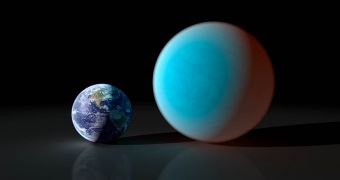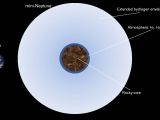Thanks to Kepler, thousands of exoplanets may have been discovered with many more to come. The wealth of new data coming from the space telescope has shaped our understanding of star systems outside our own and has led us to believe that the solar system is quite rare in the galaxy.
We've found plenty of planets similar to the ones in our own solar system, but also plenty that are quite different. Among them, super Earths hold a special place.
These planets, as their name suggests, are several times heavier and several times larger than the Earth, but are thought to be similar to our own planet otherwise, made up of heavy rocks and possibly holding on to a thin atmosphere.
A new study, published in the Monthly Notices of the Royal Astronomical Society, journal suggests that what we think we know about super Earths may be quite wrong.
The scientists behind the study believe that many of these super Earths are not like Earth at all and are in fact a lot more like Neptune.
The solid core we detect is actually surrounded by a large atmosphere several times larger than the core, made up of mostly hydrogen possibly retained from the nebula from which the star system was created.
The new model suggests that, even though this atmosphere heats up and expands to several times the size of the core planet, it doesn't escape into outer space fast enough for it to be lost during the lifetime of the star.
If this turns out to be accurate, none of the super Earths, including ones in the habitable zone would be able to harbor life, at least not as we know it.
In fact, it's especially super Earths in the habitable zone that are the most likely to hold on to this thick atmosphere.
To date, super Earths were one of the most promising type of planets for finding life or at least conditions favorable to life outside of our solar system.
Incidentally, the habitable zone, the distance from the parent star where water could exist in liquid form, has recently been redefined, affecting all previous predictions and estimates.
The one thing to retain from all of this is that we know far too little about foreign star systems to make even the more basic of assumptions.

 14 DAY TRIAL //
14 DAY TRIAL // 
